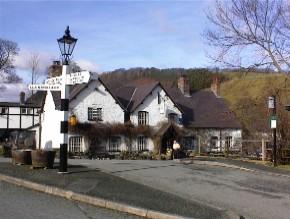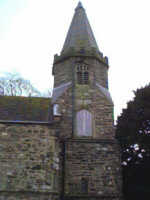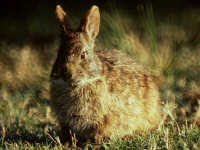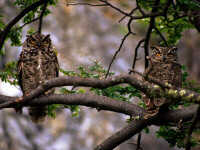Llanarmon Dyffryn Ceiriog
|
Drove Roads once criss-crossed the Upper Ceiriog Valley, bringing Drovers with their cattle and sheep to Llanarmon on their way to markets in England, and with them came the need for inns, roads and bridges. The confluence of the Ceiriog and Gwrachen provided a natural river crossing point and a focus for settlement. The name of the village is derived from the name of the 5th century missionary, Saint Garmon: Llan - the church land, (G)armon - the Saint, Dyffryn - in the wide valley of, Ceiriog - the river. Llanarmon and the upper reaches of the Ceiriog still retain their quiet rural tranquillity. The landscape around the green fertile valley is one of rolling hills topped with wild empty moors and crossed by many small streams and springs.
St Garmon's Church is a fine early Victorian stone building of 1846 which replaced an earlier church in serious dilapidation demolished the year before. The Church is unusual in having two pulpits. The mound in the Churchyard may be a bronze age burial mound, although it is known locally as Tomen Garmon and is said to be the place from which the saint preached. The graveyard contains many old slate headstones, some dating back to the 1700's. At least one of the yew trees here is over 1000 years old. Wildlife in the Valley
At night listen for the calls of tawny owls which roost in some of the village buildings. Grey and pied wagtails, flycatchers, yellowhammers and wrens are among the many species that enjoy the shelter and food the village provides. And in summer martins and swallows fill the sky with their insect-hunting flights. In autumn they gather in great flocks, chattering with anticipation until one day... they are gone, flown off to spend the winter in warmer climes.
Many types of fungi grow in the fields and behind hedgerows. Puffballs with their brown papery 'shell' spread clouds of spores, inkcaps drip black inky spores and bracket fungus grows on the remains of fallen trees. Patient observers are rewarded with sightings of a number of wild animals. Badgers, foxes and hedgehogs may be seen when evening creeps in. Stoats and weasels hunt rabbits during the day. Look out for hares too, they are larger than rabbits and have black tips to their ears. Where to Stay in Llanarmon The Hand
Hotel,
Llanarmon D.C., Llangollen, LL20 7LD The West
Arms Hotel,
Llanarmon Dyffryn Ceiriog, Llangollen, North Wales, LL20 7LD, UK |
| Click on the town name below to visit other areas of Wales or Here for Map | ||||||
| Aberaeron | Aberdovey | Abergavenny | Aberystwyth | Amlwch | Bala | Barmouth |
| Beaumaris | Beddgelert | Betws-y-Coed | Brecon | Builth Wells | Caernarfon | Caldey Island |
| Cardiff | Cardigan | Carmarthen |  |
Chepstow | Chirk | Colwyn Bay |
| Conwy | Crickhowell | Denbigh | Fishguard | Flintshire | Harlech | |
| Haverfordwest | Holyhead | Llanberis | Llandrindod | Llandudno | Llangollen | |
| Machynlleth | Newport | Newtown | Porthcawl | Porthmadog | Pwllheli | Rhayader |
| Rhyl | Ruabon | Ruthin | Saundersfoot | St Asaph | St Davids | Swansea |
| Tenby | Welshpool | Wrexham | Photos | Old Photos | Chester | Oswestry |
Copyright © Mark Redfern 1998 -


 The
small village of Llanarmon Dyffryn Ceiriog nestles at the foot of the
Berwyn Mountains where the River Ceiriog runs down from the hills, to the
fertile valley floor.
The
small village of Llanarmon Dyffryn Ceiriog nestles at the foot of the
Berwyn Mountains where the River Ceiriog runs down from the hills, to the
fertile valley floor.  Walking,
horse riding, cycling, fishing and shooting are only some of the ways in
which visitors can take advantage of this end of the unspoilt valley.
Llanarmon and the Upper Ceiriog have a rich natural and historical
heritage which waits to be discovered.
Walking,
horse riding, cycling, fishing and shooting are only some of the ways in
which visitors can take advantage of this end of the unspoilt valley.
Llanarmon and the Upper Ceiriog have a rich natural and historical
heritage which waits to be discovered. Most
apparent is the pheasant, a game bird, roaming across fields and gardens.
In spring, flocks of young pheasants can be seen under the hedgerows,
while in summer, the raucous sound of young males fighting can be heard.
Kestrels and buzzards prey on small mammals that colonise the fields and
riverbanks and occasionally, peregrine falcons, merlins and red kites can
be spotted.
Most
apparent is the pheasant, a game bird, roaming across fields and gardens.
In spring, flocks of young pheasants can be seen under the hedgerows,
while in summer, the raucous sound of young males fighting can be heard.
Kestrels and buzzards prey on small mammals that colonise the fields and
riverbanks and occasionally, peregrine falcons, merlins and red kites can
be spotted. In
gardens, Welsh poppies peer out in yellow clumps from beside stone walls.
In hedgerows nestle violets and celandine. In fields, harebells and
foxgloves scatter themselves through the grasses, mixing with campions,
knapweeds and orange hawkbit. Under the shelter of forest, bluebells add
to the sights and scents of woodland.
In
gardens, Welsh poppies peer out in yellow clumps from beside stone walls.
In hedgerows nestle violets and celandine. In fields, harebells and
foxgloves scatter themselves through the grasses, mixing with campions,
knapweeds and orange hawkbit. Under the shelter of forest, bluebells add
to the sights and scents of woodland.